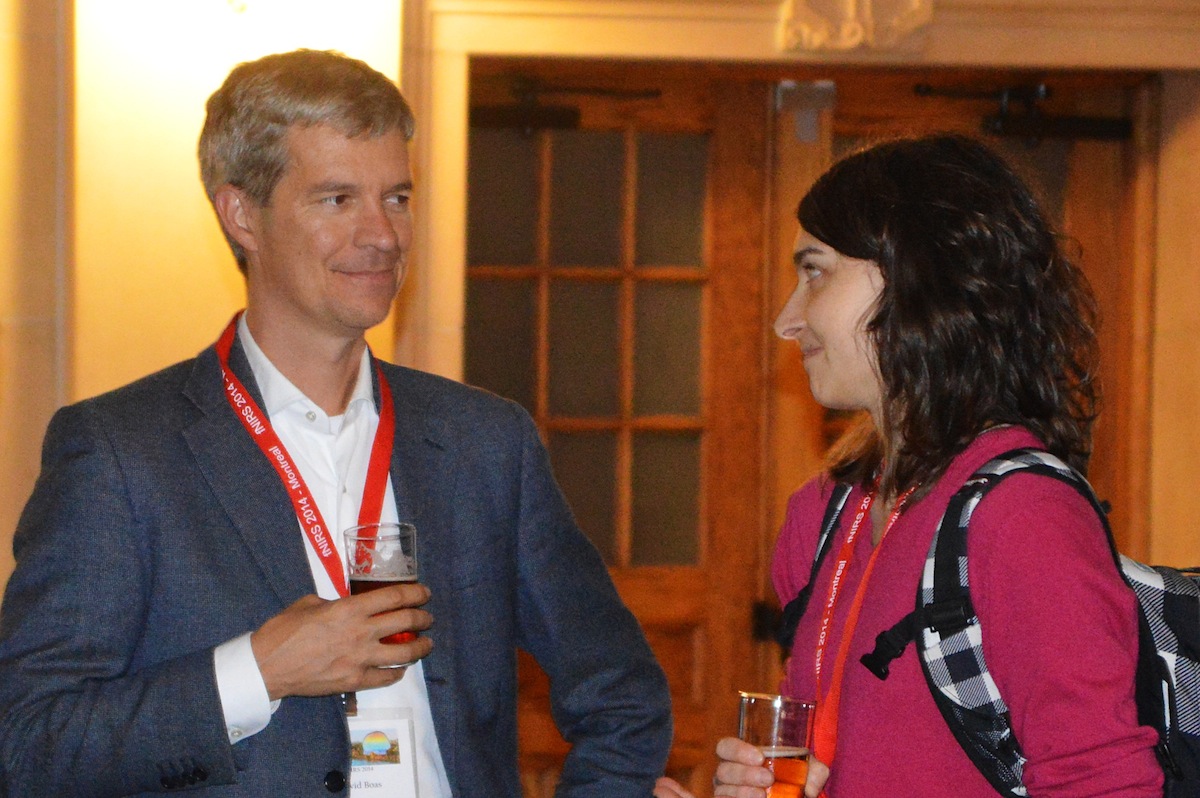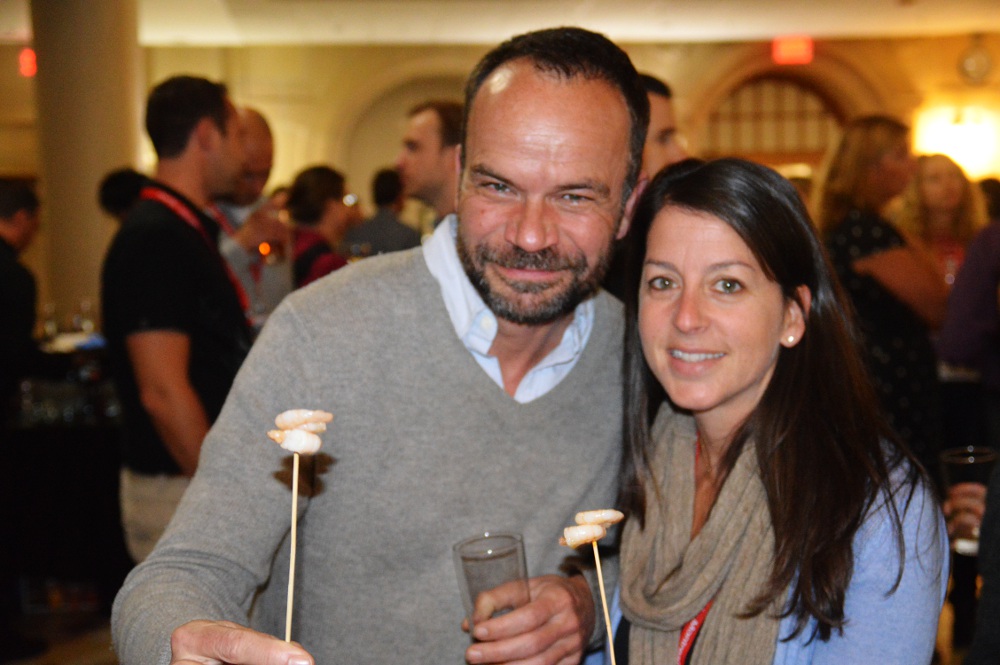The Daily Free Press recounts the HUBWeek event in which Center Director Bruce Rosen and medical illustrator Danny Quirk spoke about the intersectionality of human anatomy and visual art.
The Birth of an Academic Society
October was a month of milestones for functional near infrared spectroscopy (fNIRS). With the third biennial fNIRS meeting and the official launch of the Society for Functional Near Infrared Spectroscopy, the future of the light-based imaging technique has never looked brighter.
The Martinos Center’s David Boas has played an integral role in this. He was among the pioneers of the technique in the early ‘90s, while still a student at the University of Pennsylvania, working to develop a method with which to monitor the oxygenation of blood noninvasively and without ionizing radiation. And he has continued to advance it at the Martinos Center, refining the technology—making it ever more portable and user friendly—and working to introduce it into the clinic for a range of important applications.

Equally significant are his efforts in building the community of users and developers. In 2010, Boas and colleagues held the first fNIRS conference, in Boston, in response to the ever-burgeoning interest in the technique. Led by fMRI, functional neuroimaging has exploded over the past 20 years, he said. More and more people want to use it to better understand how the brain does or doesn’t work in their respective domains. And for many of them, fNIRS is “just the right match” to answer their questions.
The success of that first gathering led to a 2012 meeting in London, and then to this year’s in Montreal. (These meetings would not have been possible without the efforts of local organizers Clare Elwell and Frédéric Lesage, respectively.) The conference has grown steadily with each of these. And the numbers behind them tell a story in themselves. The 2010 meeting saw 149 registrations and 49 abstract submissions. Now, only four years later, the organizers are reporting 279 registrations and 221 abstract submissions.
“The vast majority of people attending this year were also presenting, which basically means we launched at exactly the right time,” Boas said.
How so? The original meeting facilitated entry into the field for investigators from a wide array of disciplines—psychologists, cognitive scientists, child development researchers—giving them a forum in which to interact with the developers of the technology so they could optimally apply it in their studies. Now, the same researchers who were then figuring out what the technology was and how it worked are presenting exciting results they have obtained with it.
Boas noted the “phenomenal diversity” of applications the users are exploring.
The greatest single application of fNIRS, he said, is monitoring brain development in infants and children. Scientists and clinicians are particularly interested in the technology because it’s so difficult to study these populations with fMRI. With the latter, subjects must remain immobile inside the scanner for fairly lengthy periods of time—never an easy thing with children. fNIRS frees researchers of those constraints and furthermore enables imaging while the infants or children are engaging their environments, adding whole other dimensions to what the researchers can explore.
But this is by no means the only application. Attendees also heard about studies of children with cochlear implants, looking at the development of language and auditory areas of the brain in these children with impaired hearing or who are deaf. This is another population that can’t easily be studied with fMRI, because the powerful magnets used with the technology could damage the implants or even injure the subjects.
Other research is exploring executive function and working memory and how deficiencies in these areas can manifest in aging, dementia, brain injury and psychiatric disorders. There’s also potential for studying brain function in patients in the intensive care unit and in the operating suite, where use of other, more unwieldy neuroimaging technologies simply isn’t possible.
The emergence of the society
With the continued growth of the meetings Boas and the others decided it was time to establish a formal organization to oversee them. “It’s important that the conference be run by the community,” he said, “and you need an organization to make that possible.” With this in mind, they established a founding board and applied for non-profit status. The final paperwork arrived on Sept. 3 and the Society for Functional Near Infrared Spectroscopy was born.
To ensure representation of the diverse and far-flung fNIRS community, the organizers held elections in July and August. At the meeting in Montreal, they announced four new board members—Heather Bortfeld, Robert Cooper, Turgut Durduran and Marco Ferrari—as well as the new secretary of the society, Martin Wolf, and the new president-elect, Clare Elwell.
So what’s next? They will need to organize fNIRS2016, of course—it’s never too soon to start—but other plans are also afoot. Just one example: They are looking to establish local chapters of the society in hopes of encouraging greater community involvement in the dissemination and utilization of the technology, as well as in the education of other potential users.
It’s an exciting time for fNIRS, which two decades ago was barely a glimmer in the eye of a handful of physicists. “It’s tremendously satisfying to see how far we’ve come in only 20 years, a relatively short period in imaging technology time,” Boas said. “I can’t wait to see what the next 20 years brings.”
From traffic flow to facilitating a bit of rocking out: Stacey Ladieu on making a meeting work |
|
|
|
A successful conference involves more than just the science, of course. There’s also a host of logistical challenges to address. Among these: “determining if we have the right flow of things, like making sure the poster session has people moving around easily, especially giving proper exposure to the sponsors,” said Stacey Ladieu. Ladieu is the Martinos Center’s meeting and event planner and has played an unparalleled role in the success of the conference. With two fNIRS meetings already under their belts, though, she and the other organizers had a good sense of what works and what doesn’t. The Montreal meeting went off without a hitch. One of Ladieu’s tasks was organizing the Saturday night social gathering at a chic bar in the Old Port of Montreal. This offered an opportunity to catch up with friends and colleagues in a relaxed environment, with a dance band drawing on reggae and native Canadian styles setting the mood. Ladieu was especially happy to see the researchers and others having such a good time. “Watching attendees let loose and enjoy their time away while gaining scientific knowledge is always gratifying,” she said. |
| Stacey Ladieu with conference program chair Helmuth Obrig (photo by Felix Scholkmann) | |
| A brief glimpse of the festivities on Saturday night (video by Maria Angela Franceschini) |
|



